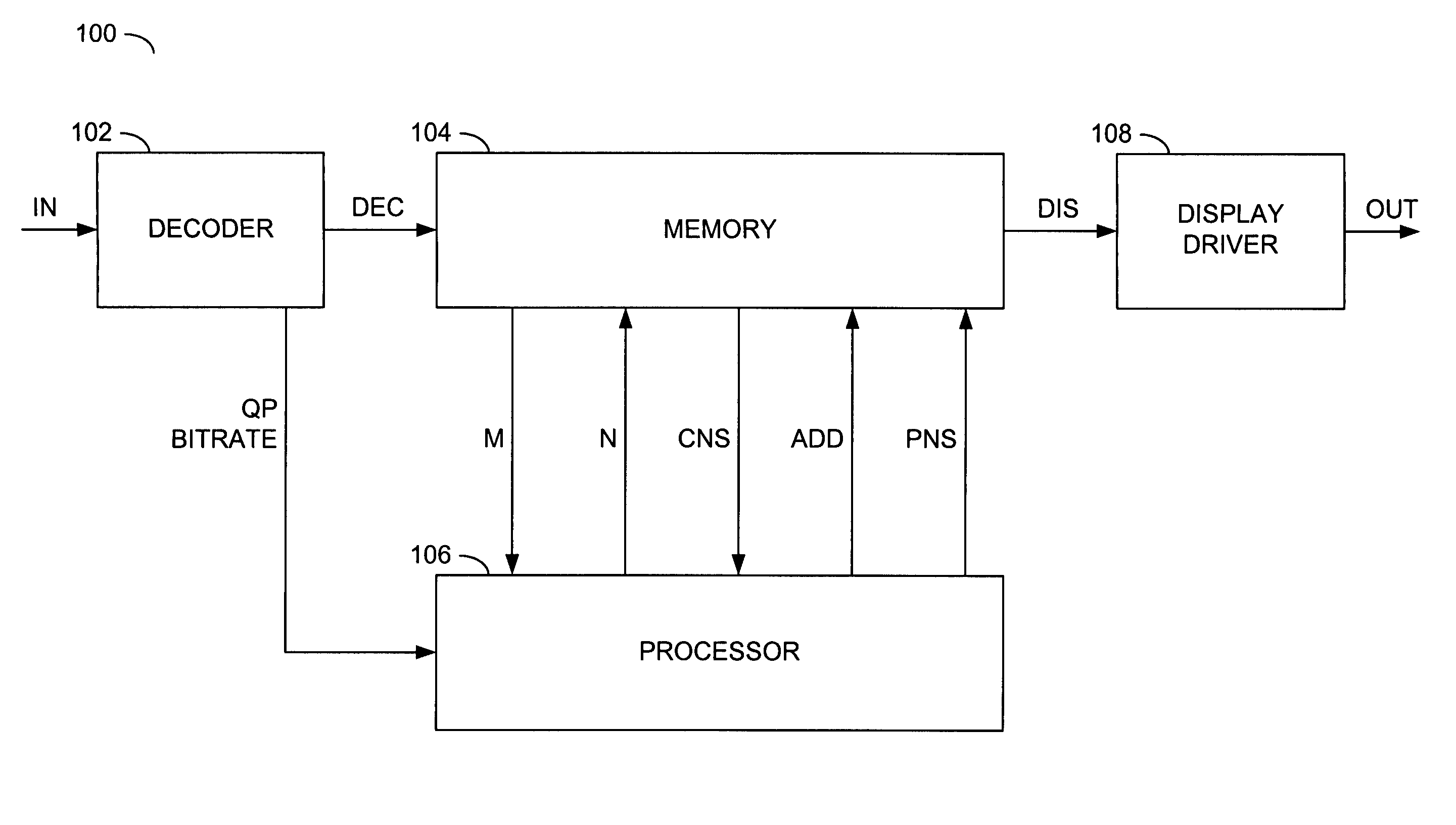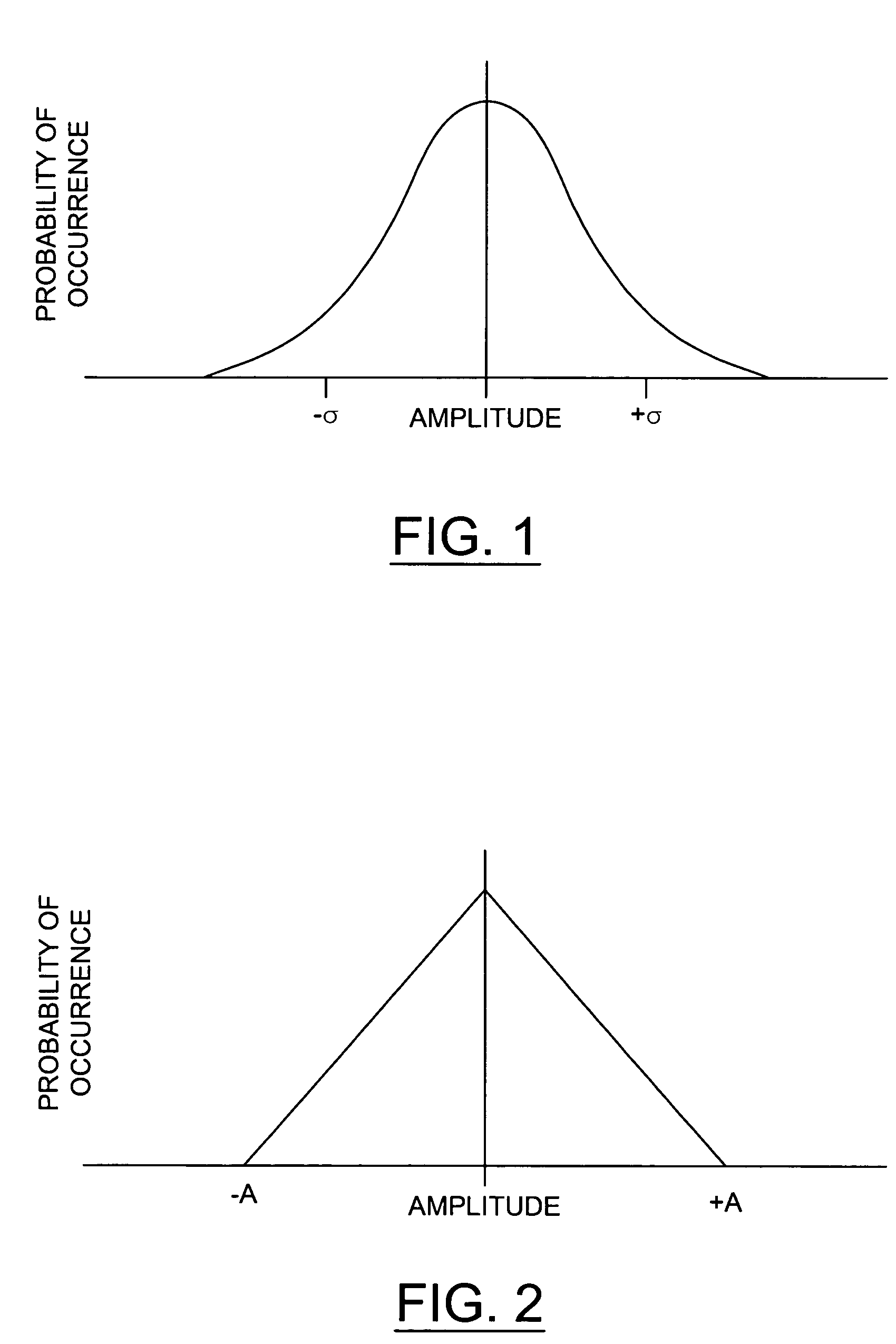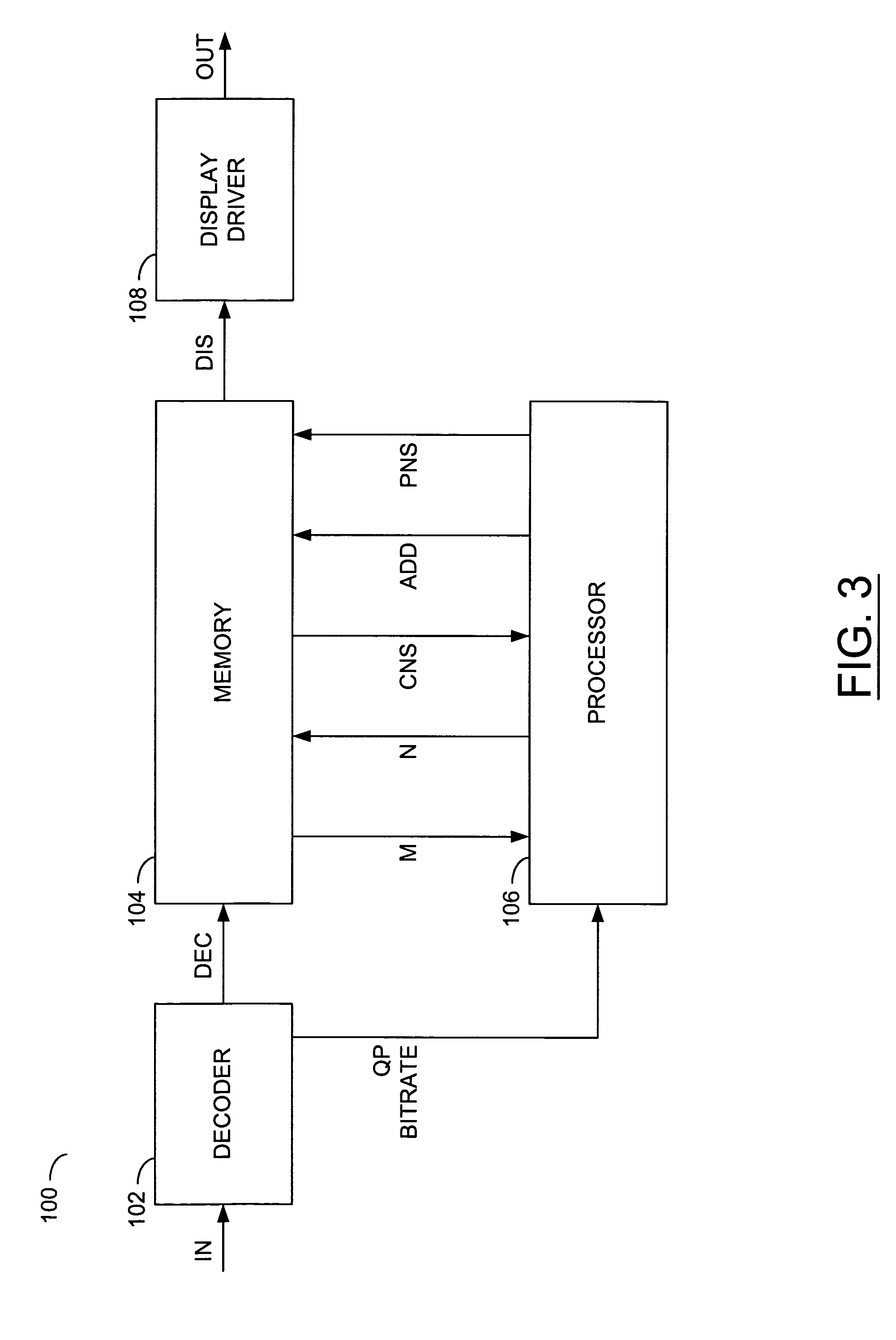Method for video coding artifacts concealment
a technology of video coding and artifacts, applied in the field of video decompression, can solve the problems of visual disturbing coding artifacts, distinguishing discontinuities generated from coding (i.e., coding artifacts), and real edges in a decoded, and achieves efficient memory access, low computational complexity, and reduced coding artifacts
- Summary
- Abstract
- Description
- Claims
- Application Information
AI Technical Summary
Benefits of technology
Problems solved by technology
Method used
Image
Examples
Embodiment Construction
[0018]The present invention generally implements an approach of adding random noise into a decoded picture to conceal coding artifacts. The approach may consists of multiple steps. The steps may include pre-generating K random noise samples according to a specific probability distribution. Two example distributions may include (i) a Gaussian distribution (FIG. 1) with a zero mean and a standard deviation a and (ii) a triangular distribution (FIG. 2) between −A and +A, where A is a positive number. The randomly generated noise samples may be stored in a one-dimensional array (e.g., noise array G). For each block I in a decoded picture, a random number R may be generated. The random number R may be used as an offset in accessing the noise array G. Another step may include adding the noise samples starting from G[R] to the block I. The block I may define luminance values and / or chrominance values in the decoded picture. Note that the step of calculating the noise samples may be perform...
PUM
 Login to View More
Login to View More Abstract
Description
Claims
Application Information
 Login to View More
Login to View More - R&D
- Intellectual Property
- Life Sciences
- Materials
- Tech Scout
- Unparalleled Data Quality
- Higher Quality Content
- 60% Fewer Hallucinations
Browse by: Latest US Patents, China's latest patents, Technical Efficacy Thesaurus, Application Domain, Technology Topic, Popular Technical Reports.
© 2025 PatSnap. All rights reserved.Legal|Privacy policy|Modern Slavery Act Transparency Statement|Sitemap|About US| Contact US: help@patsnap.com



